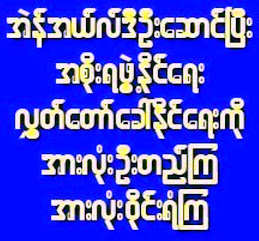YANGON, Myanmar (AP) — Myanmar has earned more than $175 million (130 million euros) from its latest government-sponsored sale of gems, despite a U.S. ban on their import, an official said Friday.
Most of the revenue from the 13-day auction that ended Thursday was earned from the sales of jade, which fetched more than $172 million (128 million euros).
Gemstones and pearls were the other items offered.
An organizer of the gems emporium, speaking on condition of anonymity because he is not authorized to release information, said 2,648 gem merchants participated from nearly a dozen countries, including China, Thailand, Japan and Canada.
In July, President Bush signed legislation banning the import of gems from Myanmar, which already was the voluntary policy of retailers like Tiffany's and Bulgari.
It is one of several economic sanctions Washington has applied to Myanmar's military government because of its poor human rights record and failure to hand over power to a democratically elected government.
U.S. officials said at that time that Myanmar has been evading earlier gem-targeting sanctions by laundering stones in other countries before they are shipped to the United States.
Myanmar gem sellers say the sanctions have very little impact on their business because they rely on Chinese and Thai gem merchants, who are the major buyers.
The largest contingent at this latest sale was the more than 2,200 gem merchants from China, which is the main market for Myanmar jade. The second largest contingent of more than 70 gem merchants were Thais, who usually dominate the gems and jewelry bidding.
Due to U.S. economic sanctions imposed on Myanmar in July 2003, which froze all U.S. dollar remittances to the country, international business transactions including the gem sales are done in euros.
Organized by the Mines Ministry, the events are major revenue earners for Myanmar — one of the biggest jade and gem producing countries in the world. Myanmar has held gem emporiums since 1964, and organizers launched a midyear sale in 1992.












